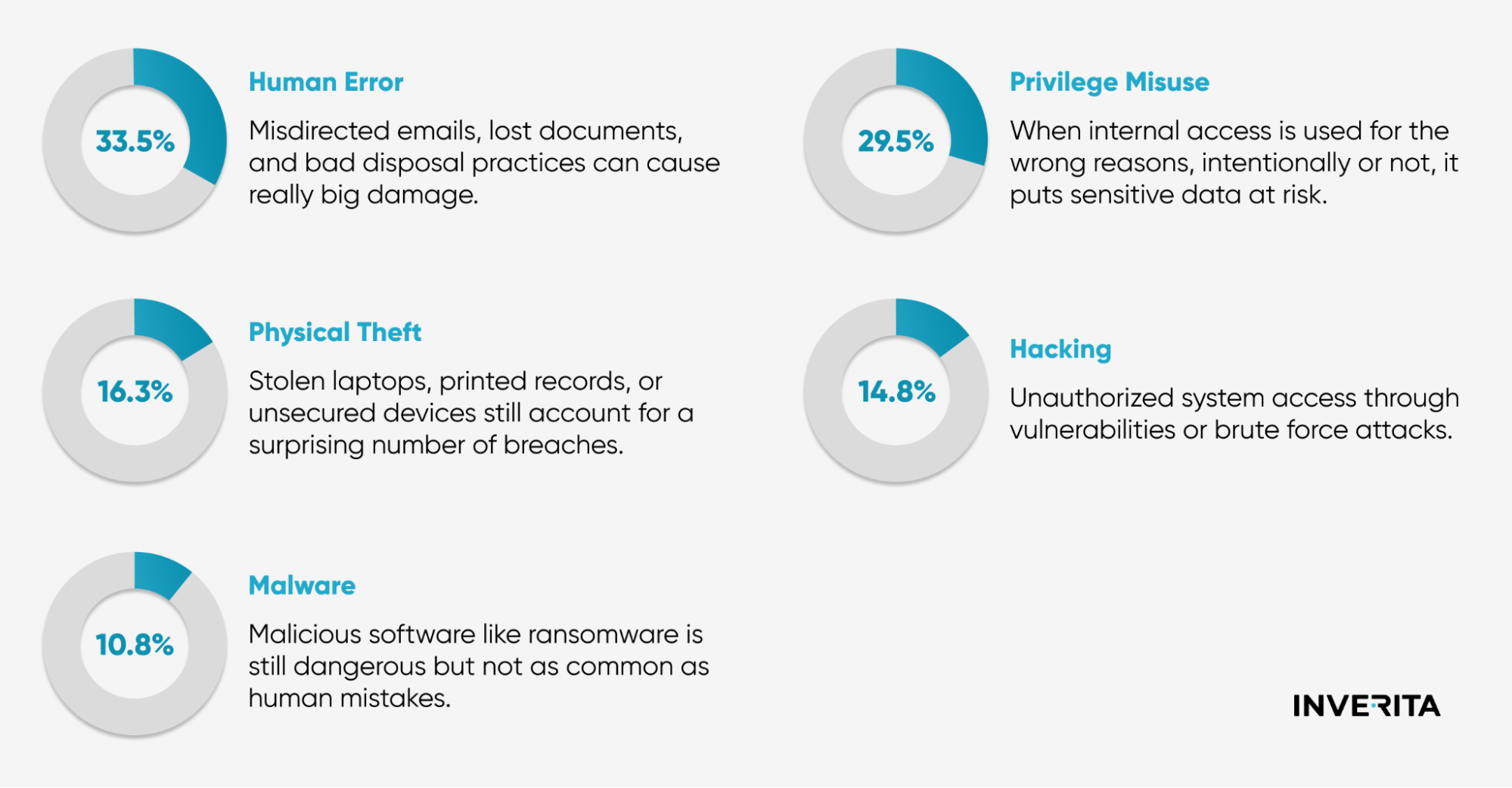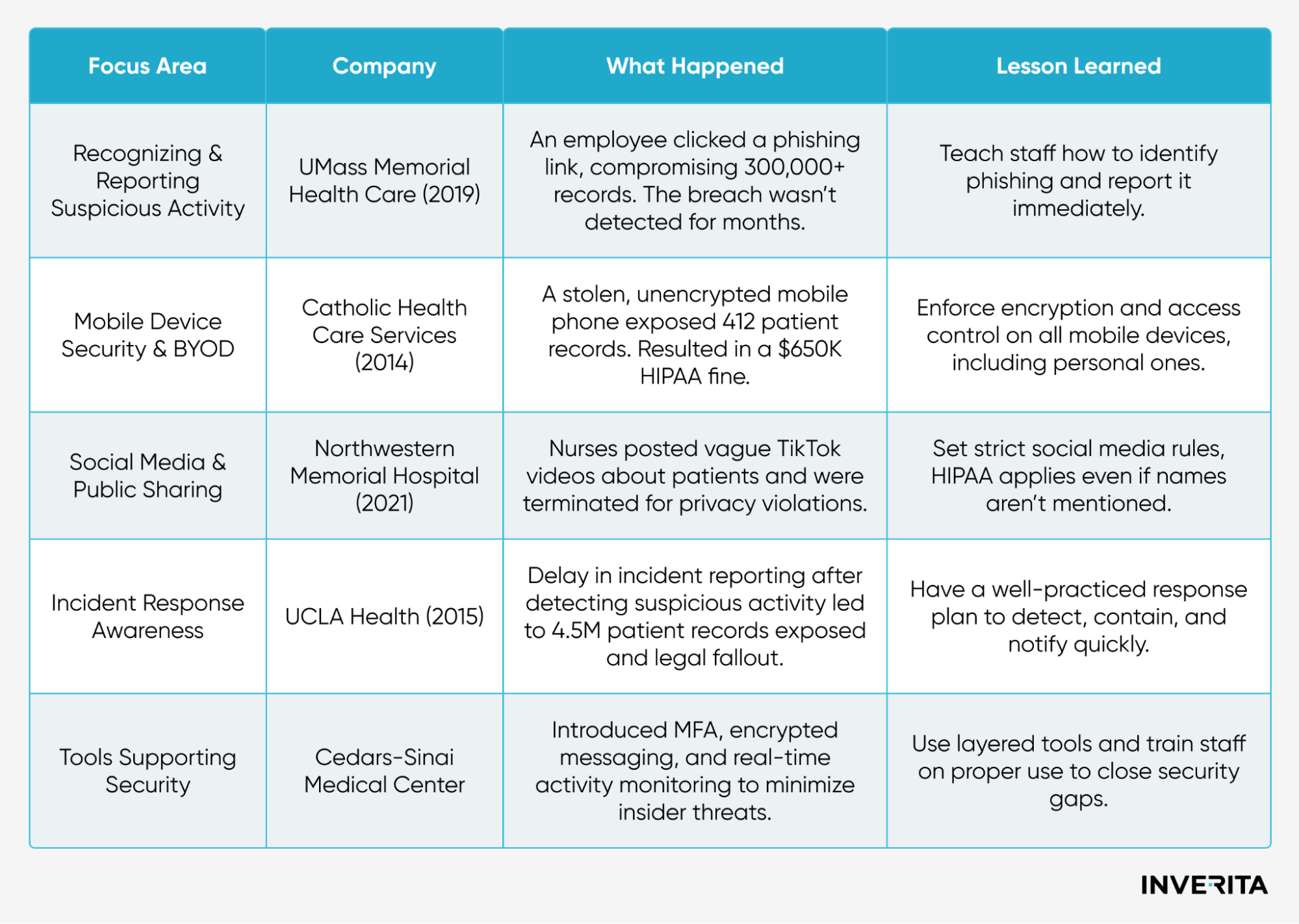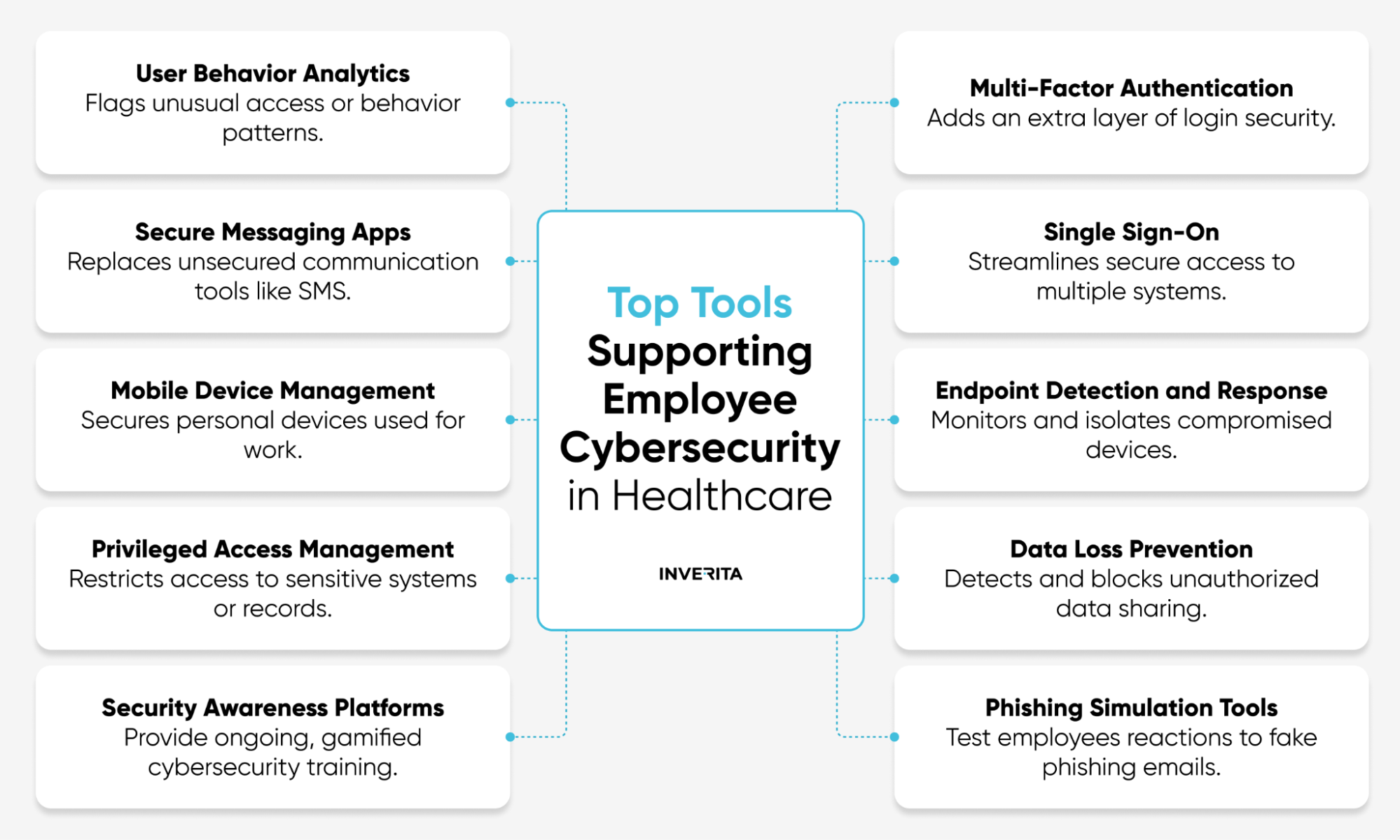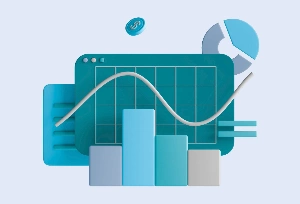Building a Security-First Culture in Healthcare
Security must go beyond the IT department. When leadership prioritizes cybersecurity and weaves it into daily workflows, employees naturally become more mindful. It’s about making proactive measures part of the organizational DNA, not just a once-a-year training.
Key Metrics to Measure Awareness Program Success
Running regular security training for healthcare employees is the best practice for securing patient data, but how do you know if it’s actually working? Sensitive patient data, HIPAA compliance, and rising cyber threats at stake make simply checking a training box not enough.
Here are the key metrics you should track to evaluate the effectiveness of your employee security:
#1 Phishing Simulation Performance
Simulated phishing campaigns are a powerful way to test real-world awareness.
- Click-through rate: How many employees clicked on a fake phishing email?
- Report rate: How many correctly identified and reported it?
- Response time: How quickly was the threat reported?
Lower click rates and faster reporting over time indicate growing awareness and sharper reflexes.
#2 Training Completion Rates
Track the percentage of employees who complete mandatory comprehensive training on time.
- Break it down by department, role, or location to spot gaps.
- Monitor trends across training cycles.
High completion rates signal organizational buy-in and help maintain regulatory compliance.
#3 Knowledge Retention Scores
Use quizzes and assessments before and after training to measure what employees are actually learning.
- Pre- and post-training test comparisons
- Scenario-based questions tied to daily healthcare operations
Improved scores suggest better understanding of key security concepts like phishing, password hygiene, and HIPAA rules.
#4 Security Incident Trends
Look at how security-related incidents change over time.
- Are employees reporting more phishing emails?
- Has the number of successful social engineering attacks decreased?
An initial rise in reports followed by a long-term drop in actual incidents is a good sign your program is working.
#5 Repeat Offender Rate
Track employees who consistently fall for phishing simulations or fail quizzes.
- Use this to provide targeted refresher training.
- Monitor if high-risk individuals improve over time.
A decreasing repeat offender rate reflects stronger engagement and retention.
#6 Employee Feedback
Gather feedback through surveys to understand how effective, relevant, and engaging employees find the training.
- What did they like?
- What didn’t work?
- Do they feel more confident spotting threats?
Qualitative insights can help you fine-tune the program for better results.
#7 Security Culture Metrics
Go beyond training and measure the broader security mindset.
- Do employees feel responsible for protecting electronic health records?
- Are they confident in reporting suspicious activity?
- Do they talk about cybersecurity in team settings?
A strong security culture is the ultimate sign of a successful awareness program.
Final Thoughts: Empowering Healthcare Teams to Be the First Line of Defense
Cybersecurity in the healthcare industry isn’t just an IT problem, it’s a people problem. Measuring the success of your awareness efforts means tracking both behavior and mindset.
If you have questions on how to secure patient data on the technical side, feel free to connect. Our core domain is doing software for healthcare organizations, so we’ll be happy to help with security, development, improvement, discovery, or design. 






_1764586939-small.webp)

